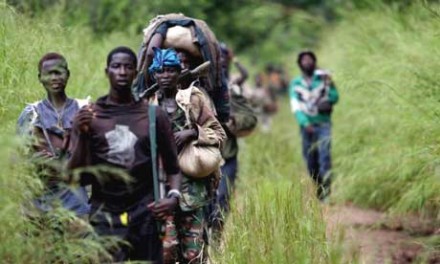An informative, thought-provoking piece on LRA abduction patterns from Paul Ronan at Resolve, one of our DC-based advocacy partners:
The LRA has long been associated with child soldiers, and rightfully so – UNICEF estimates that the LRA has abducted at least 35,000 children since 1986. But LRA Crisis Tracker data on abductions indicates that the LRA is relying less on abducted children to replenish fighting capacity, corroborating a trend that’s been highlighted anecdotally in the past two years by LRA analysts. Instead, the LRA seem to be abducting more adults, who often escape or are released within a few days, to transport food and other goods looted from local communities.
Analysis of LRA Crisis Tracker data reveals several trends in LRA abductions patterns that reinforce this theory. First, the LRA seem to be abducting mostly adults. Of LRA abductions in the first half of 2012 in which age information was recorded, 70.6% of abductees were adults. The LRA’s preference for abducting children, who are more impressionable and malleable than adults, when it wants to rebuild its fighting capacity is well documented. The preference for adult abductees so far this year suggests that instead of seeking to train new fighters, the LRA is in need of strong adults capable of carrying heavy loads of looted goods.

Another indicator is the large number of abductees who are escaping from the LRA soon after being abducted. In the first half of 2012, 47.6% of reported abductees escaped within 72 hours of their abduction (this number is likely even higher in reality, as abductions are more likely to be reported than escapes). Many reports have also emerged of LRA forces abducting civilians, forcing them to carry goods back to an LRA camp, and then intentionally releasing them. If the LRA were seeking to build its fighting capacity, more long-term abductions in which abductees are forced to undergo the LRA’s arduous training and indoctrination processes would be expected.
Yet another sign that the LRA is using abductees to carry looted goods rather than as new forces is the decrease in the scale of individual abductions. The average number of people abducted per attack has dropped steadily from 2010 (3.00) to 2011 (2.10) to the first half of 2012 (1.63). And with the largest abduction this year being 13 people, we’ve seen nothing like the mass abductions targeting children and young adults seen in Obo, CAR in March 2008 (73 people) and Duru, DRC in September 2008 (248 people).
This trend of using abducted persons as porters coincides with reports that pressure by the Ugandan military is forcing LRA groups to move frequently and refrain from building permanent camps or planting crops. While on the run, LRA forces must spend more time finding food and trying to survive, leaving less time to invest in training and indoctrinating new fighters.
However, can we conclude from these trends that the LRA’s integration of children into their ranks will decline indefinitely, or that the LRA’s fighting capacity has been permanently reduced? The short answer is likely no, and we’ve got another blog coming next week that will further examine trends in LRA abduction strategies and their implications for DDRRR efforts and military operations.
(Photo Credit: The Guardian)

Think people should hear about this?